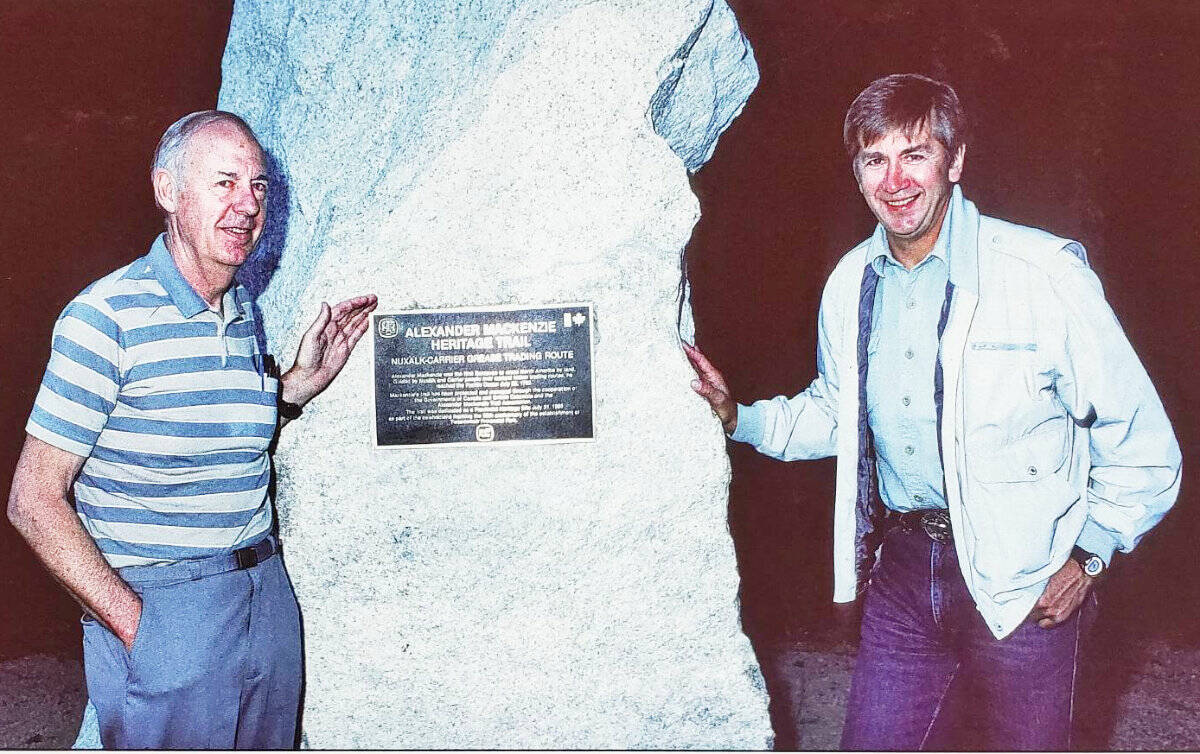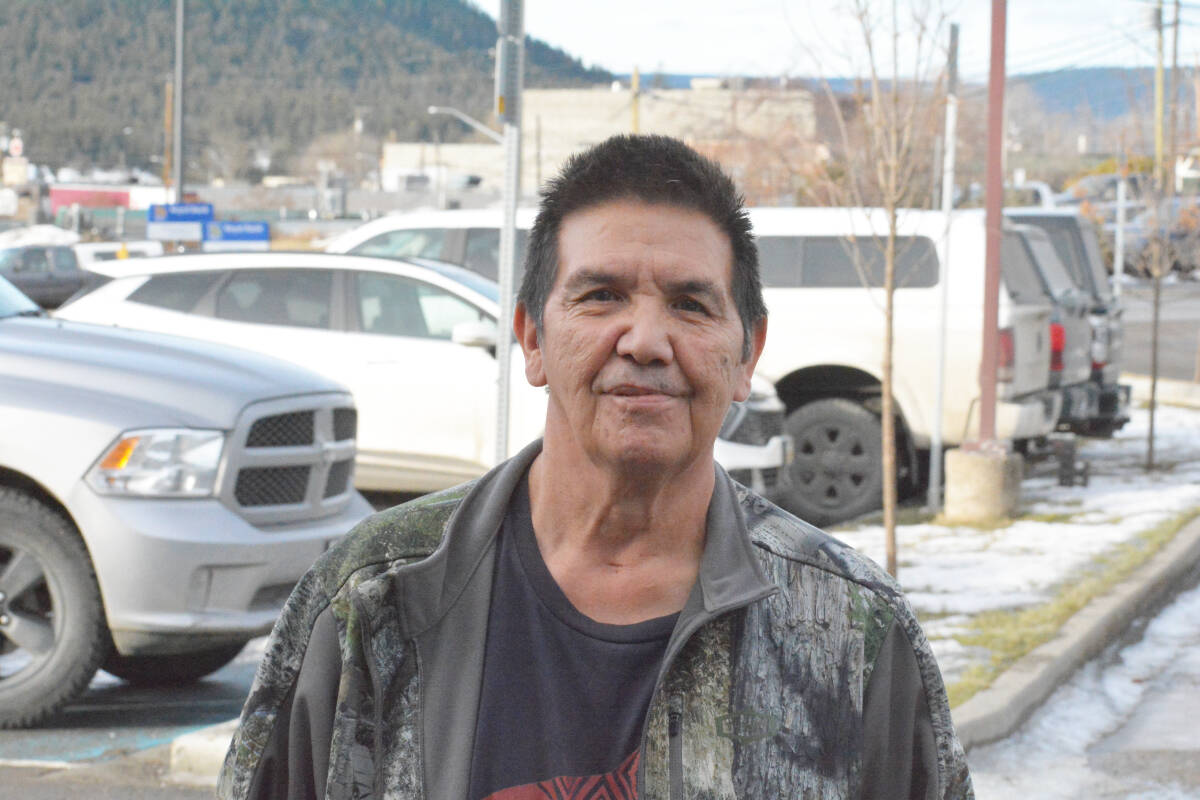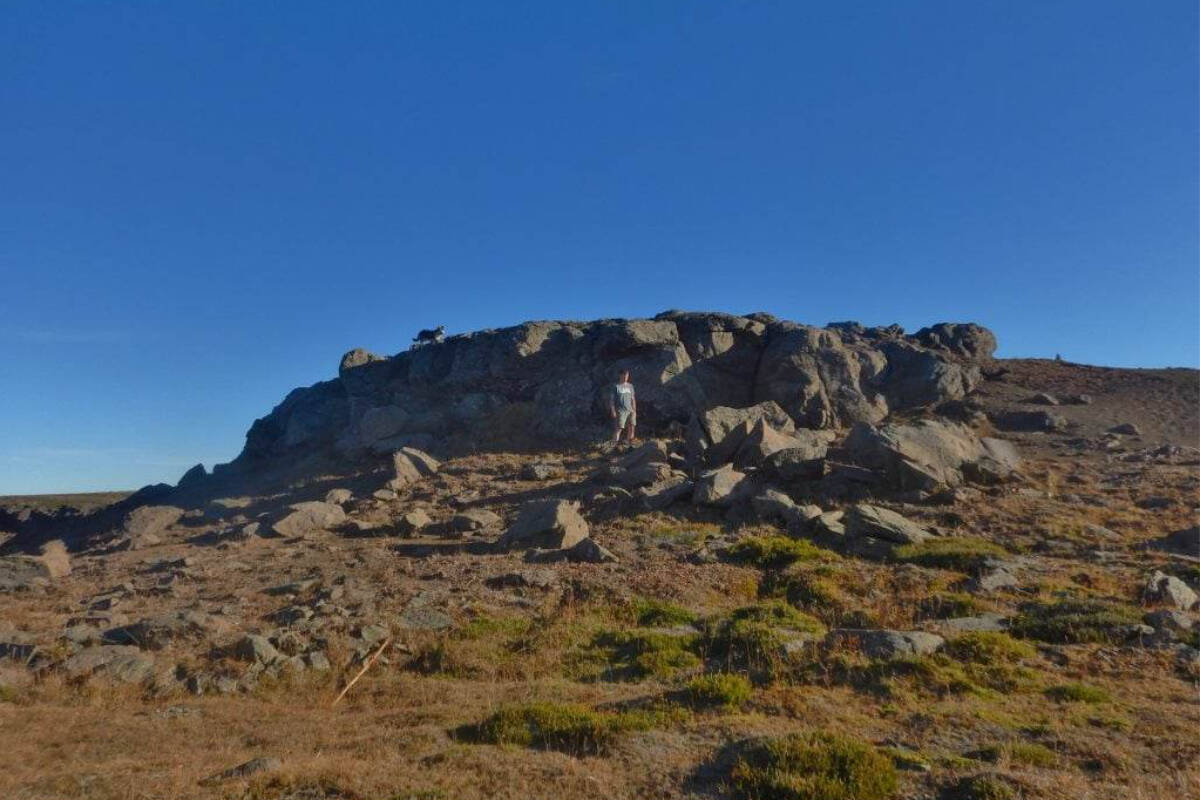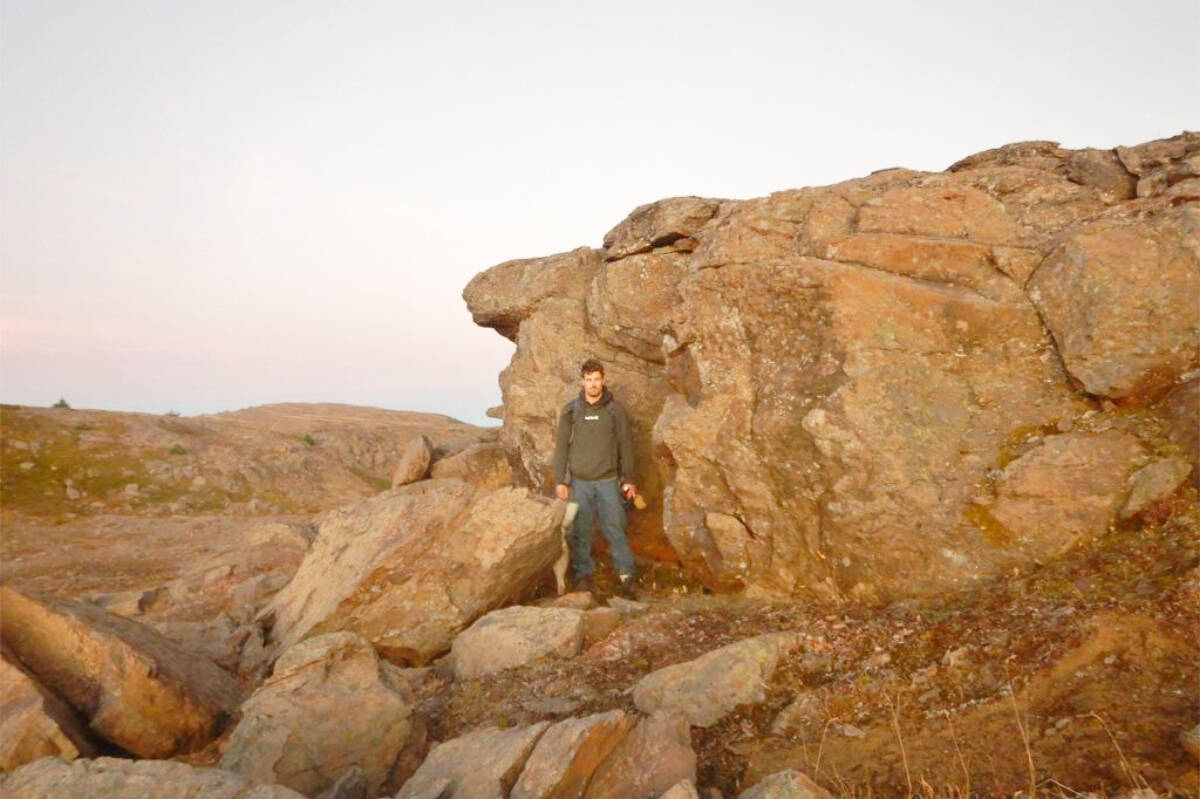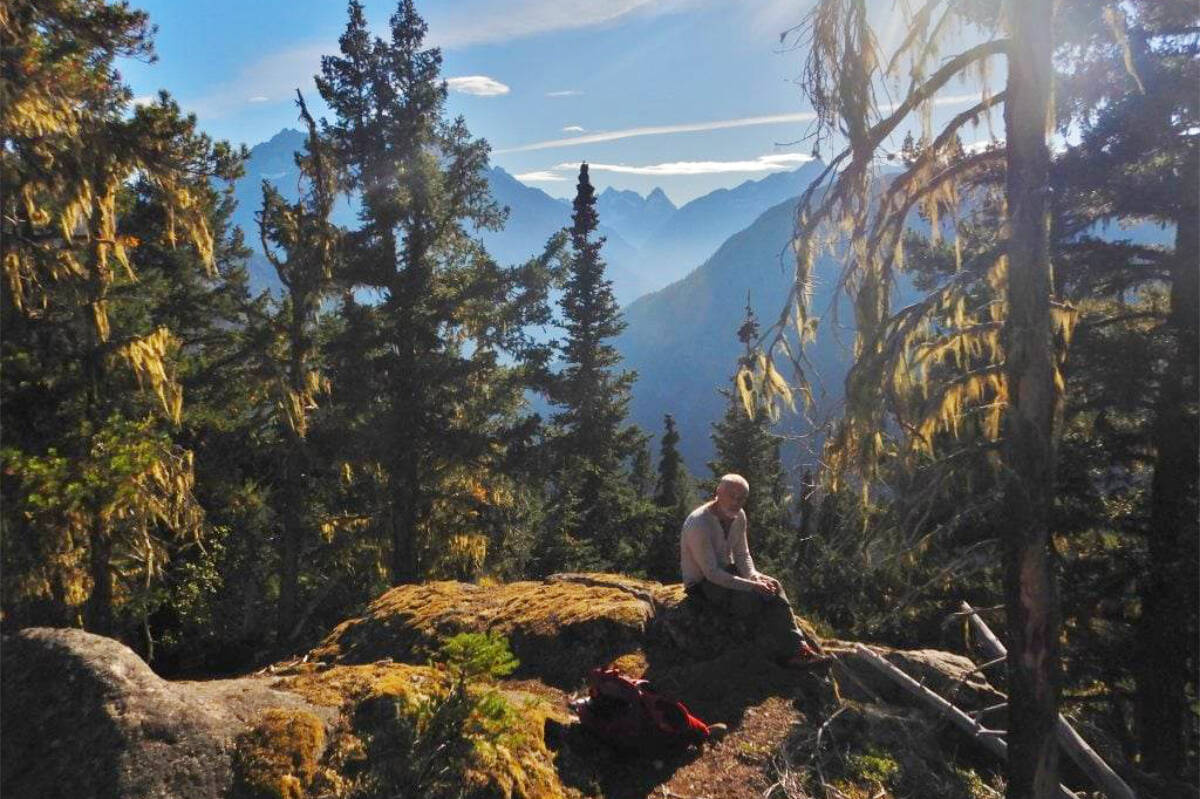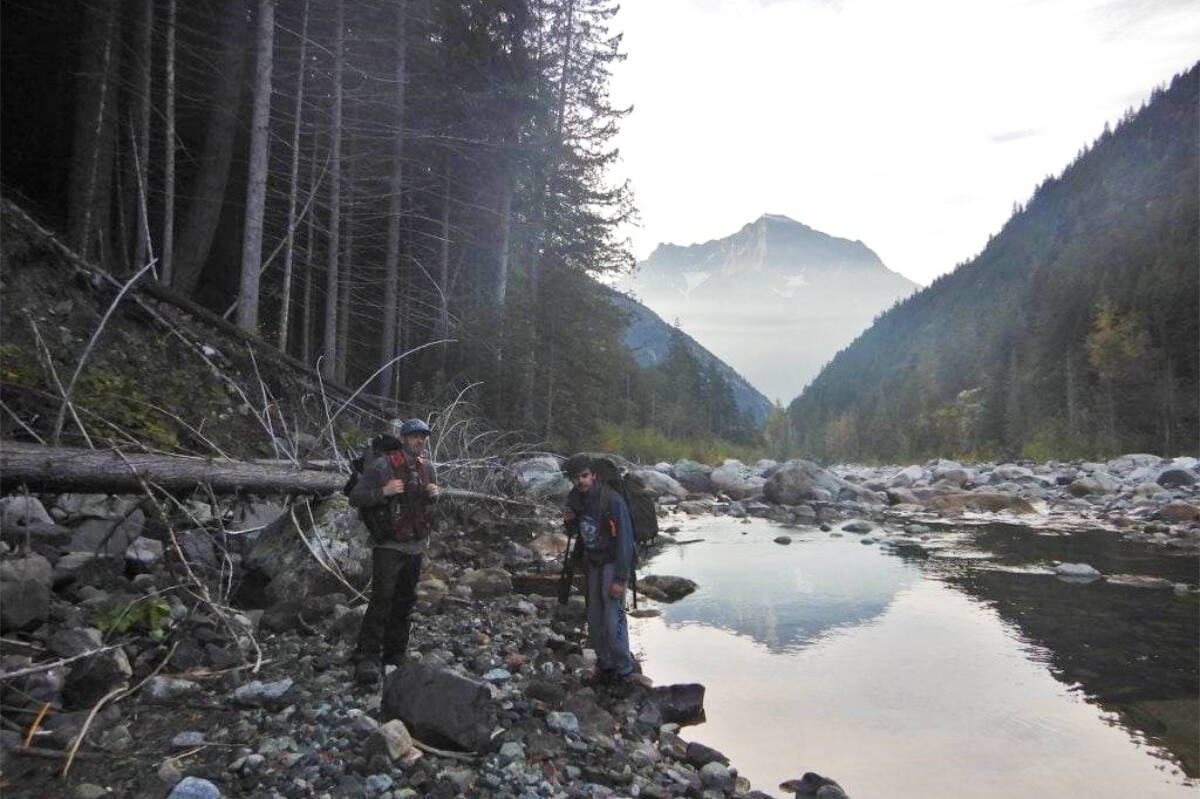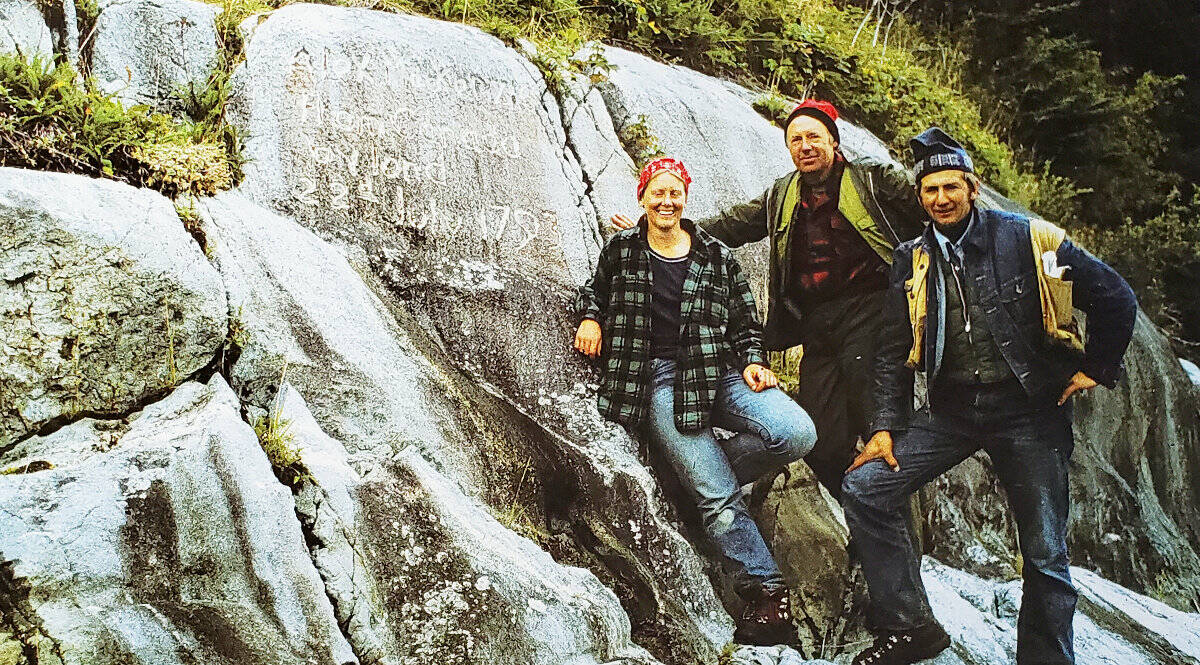Plans are in the works to revise a portion of the grease trail network near Bella Coola where First Nations guides led Alexander Mackenzie when he travelled from the Fraser River near Quesnel to the Pacific Ocean in July 1793.
Hälle Flygare, living in Canmore, Alta. was a former park warden in Banff National Park who has been documenting the entire route for decades.
Between 1975 to 1986, Flygare retraced and photographed the 347 km stretch from the Fraser River to the Friendly Village by the Bella Coola River, while working for Parks Canada, BC Parks and The Nature Conservancy of Canada on the Sir Alexander Mackenzie Heritage Trail, now known as the Nuxalk-Carrier Grease Trail.
Flygare has walked the entire 347 km six times with his wife Linda and others, gathering information and photographs about the venture which he compiled into six self-published books in 2021 and 2022.
The books cover Mackenzie’s exploration in 1792/73 from Grand Portage to the Fraser River and his hike following First Nations trails to Friendly Village and out to Mackenzie Rock in the Dean Channel and in Volume 4, his home bound excursion hiking and canoeing back to Fort Fork by the Peace River.
“I spent at least 10 years to complete the six volumes,” he said, noting they are available for sale at Books and Company in Quesnel and Prince George.
After reading Mackenzie’s diaries and cross referencing the entries with his own experience hiking the Grease Trail, Flygare became convinced the last section of the Nuxalk-Dakelh Grease Trail (also referred to as the Alexander Mackenzie Heritage Trail) into the Bella Coola Valley was not identified properly.
In 1985, the late Leslie Kopas, who was born and raised in Bella Coola, explored the Rainbow Mountains where he checked some ideas about Mackenzie’s route from Mackenzie Valley to Burnt Bridge Creek, taking clues from an entry in Mackenzie’s journal.
“Our way was now nearly level, without the least snow, and not a tree to be seen in any part of it. The grass is very short, and the soil a reddish clay, intermixed with small stones. The face of the hills, where they are not enlivened with verdure, appears, at a distance, as if fire had passed over them. It now began to hail, snow, and rain, nor could we find any shelter but the leeward side of an huge rock.”
In a letter addressed to John Woodworth, who was chairman of the Nature Conservancy of Canada, Kopas included his own marked map and proposed the route he believed Mackenzie had actually taken guided by Nuxalk and Dakelh.
“I offer you and the Alexander Mackenzie Trail Association these ideas because Mackenzie’s entry to the Bella Coola Valley is a particularly interesting part of his journey. I think it’s important we get the path he took located correctly,” Kopas stated in the letter.
Over the years Flygare has asked around for people to check out the location of the huge rock and Kopas’ proposed Grease Trail route into the Bella Coola Valley.
Fortunately for Flygare, retired Bella Coola physician Dr. Harvey Thommasen learned about Flygare’s hope to have the correct route determined and decided last summer to see what he could find.
“The first time I went with Dave Flegel. Dave has all kinds of special navigation apps to make sure we followed Halle’s route,” Thommasen said.
“We didn’t get over the ugly steep part where Mackenzie says he was surrounded by a precipice, but we did follow a real nice trail into the rocky bluffs so we figured we were on target.”
He went again with Andy Schmidt and Ronnie Poole, also from Bella Coola.
“I asked them to join me because they are in a lot better physical condition than I. It was a good decision because they got up farther than me, and confirmed the steep part of the hill was very do-able.”
In the spirit of if you don’t at first succeed, try, try again, Thommasen did a third attempt, this time with Chris Fletcher and Orlando Andy, who are part of a crew working on a Nuxalk Nation project to re-establish the historic Bella Coola/Kimsquit Eulachon Grease Trail.
“We finally bridged the top and got going. The hike up the ridge is tough and takes over six hours, so we ended up coming out in the dark when it was pitch black,” Thommasen said. “But that just proved we could get up to the top.”
Thommasen said they got to an altitude of 4,000 feet and started along the ridge before they had to turn back.
They also took a photograph that was consistent with Mackenzie’s diary where he wrote “we continued to descend till we came to the brink of a precipice, from when our guides discovered the river to us, and a village on its banks.”
Later Thommasen went on a fourth hike with Josh Pettinger to find the “huge rock.”
“We had to walk 30 kilometres in from the East Branch parking lot but it was October – there were no bugs. It was heavenly up there.”
The two men found the rock right where Flygare said it should be.
Thommasen said he is so grateful for all the people that joined him as he attempted to find the trail.
Working with Nuxalk Nation Councillor Blair Mack, Flygare hopes to secure funding from the British Columbia Government to clear a trail from the Huge Rock down into the Bella Coola Valley along the eastern side of Burnt Bridge Creek.
Mack was one of six youth Flygare hired to clear portions of the trail in 1978 from Fish Lake to Eliguk Lake.
“I worked hands-on trailblazing,” Mack recalled. “We were cutting logs. We cut trees and brush and opened it up.”
Fkygare said the Grease Trail in Tweedsmuir South Provincial Park is mainly a hiking trail and ends at Squinas Lake., while the trail between Eliguk Lake to Malaput Lake is strictly a hiking trail.
Thommasen plans to do a hike July 14 to 17, 2023 where he will start at the East Branch Parking lot and report back to Flygare how difficult the route is from the Huge Rock into Bella Coola.
The dates of the hike are significant as Thommasen hopes to arrive at what Mackenzie described as the “Friendly Village,” near Burnt Bridge Creek on July 17 —the same day Mackenzie and the crew arrived there in 1793.
“I don’t normally hike the Rainbow Mountains in July because of the bugs, but I think it would be interesting to experience what it must have been like for Mackenzie when he came to Bella Coola that time of year,” Thommasen said.
He plans to depart from the East Branch Parking lot 8:30 a.m. July 14th, and said he welcomes other experienced hikers to join him if they want an adventure.
monica.lamb-yorski@wltribune.com
Like us on Facebook and follow us on Twitter
Bella CoolaFirst NationsHistory
